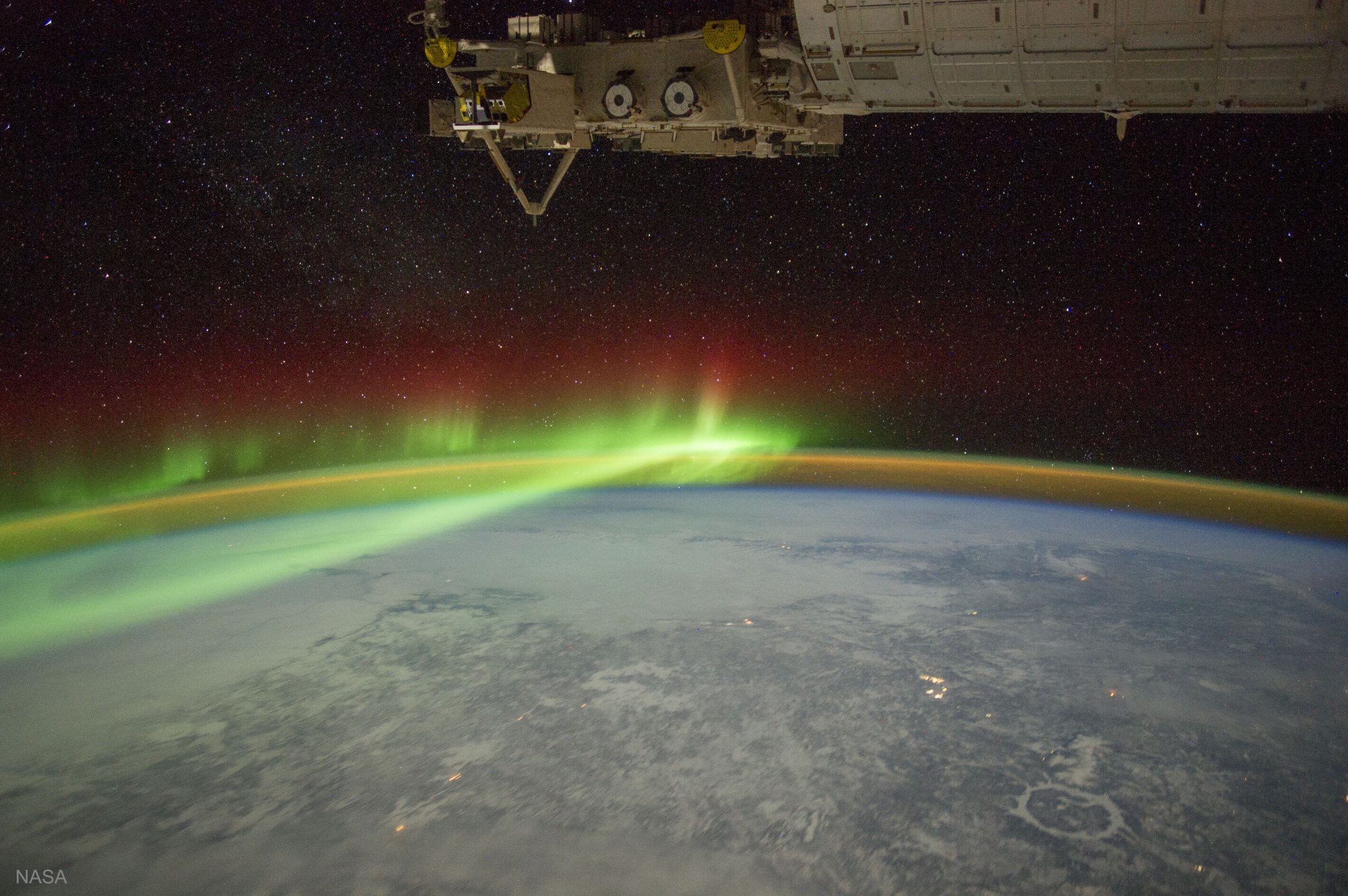NASA Funds Study of Proposals
to Investigate Space Weather Systems
JUN 11, 2024 RELEASE 24-084 Aurora and airglow are seen from the International Space Station in 2015. Credits: NASA/JSC/ESRS
NASA has selected three proposals for concept studies of missions to investigate the complex system of space weather that surrounds our planet and how it’s connected to Earth’s atmosphere.
The three concepts propose how to enact the DYNAMIC (Dynamical Neutral Atmosphere-Ionosphere Coupling) mission, which was recommended by the 2013 Decadal Survey for Solar and Space
Physics. The DYNAMIC mission is designed to study how changes in Earth’s lower atmosphere influence our planet’s upper atmosphere, where space weather like auroras and satellite disruptions are manifested. This knowledge will benefit humanity by helping us
understand how space weather can interfere with crucial technology like navigation systems and satellites.
“Earth and space are an interconnected system that reaches from the heart of our solar system, the Sun, to the lowest reaches of the atmosphere where we live and extends to the edge
of our heliosphere – the boundary of interstellar space,” said Nicola Fox, associate administrator, Science Mission Directorate at NASA Headquarters in Washington. “While space weather can spark the beautiful auroras across our skies, it also has the potential
to cause disruptions for us here on Earth and can be dangerous for our spacecraft and astronauts in space. The DYNAMIC mission will expand our understanding of how Earth itself shapes space weather events that influence our home planet.”
The DYNAMIC mission is designed to make measurements within Earth’s upper atmosphere between about 50-125 miles (80-200 kilometers) in altitude. With multiple spacecraft, DYNAMIC’s
simultaneous observations from different locations can give scientists a more complete picture of how waves propagate upwards through this part of the atmosphere.
NASA’s fiscal year 2023 appropriation directed NASA to initiate this first phase of study. As the first step of a two-step selection process, each proposal will receive $2 million for
a concept study. NASA solicited missions with a cost cap of $250 million, which does not include the launch. The studies will last nine months.
The selected concept teams are:
Key partners include Johns Hopkins University Applied Physics Laboratory in Laurel, Maryland; NASA’s Jet Propulsion Laboratory in Southern California; and Massachusetts Institute of
Technology’s Haystack Observatory in Westford, Massachusetts.
Key partners include BAE Systems in Westminster, Colorado, and the Naval Research Laboratory in Washington.
Key partners include Southwest Research Institute in San Antonio, Texas, Space Dynamics Laboratory in Logan, Utah, Global Atmospheric Technologies and Sciences in Newport News, Virginia,
and Computational Physics, Inc. in Boulder, Colorado.
For more information on NASA heliophysics missions, visit:
https://science.nasa.gov/heliophysics
-end- |

